Last updated on July 4th, 2025 at 06:04 pm
Mold grows wherever moisture amasses from leaks, high humidity, or condensation. Often mold appears as discolored or fuzzy spots surface mold lives on the paint finish deeper mold penetrates plaster or drywall substrates being harder to eradicate.
Musty odors as well as peeling paint that is bubbled and water stains indicate hidden mold. You can also look for walls that feel soft or are damp as signs of it. Blistering paint suggests underlying mold and moisture damage are probably there.
Drywall that feels spongy is probably damaged too. Often a light surface mold that is especially on semi-gloss or satin paint can be scrubbed away in contrast. Fix any leak or humidity source first; the EPA stresses mold will return if cleaned, though moisture persists.
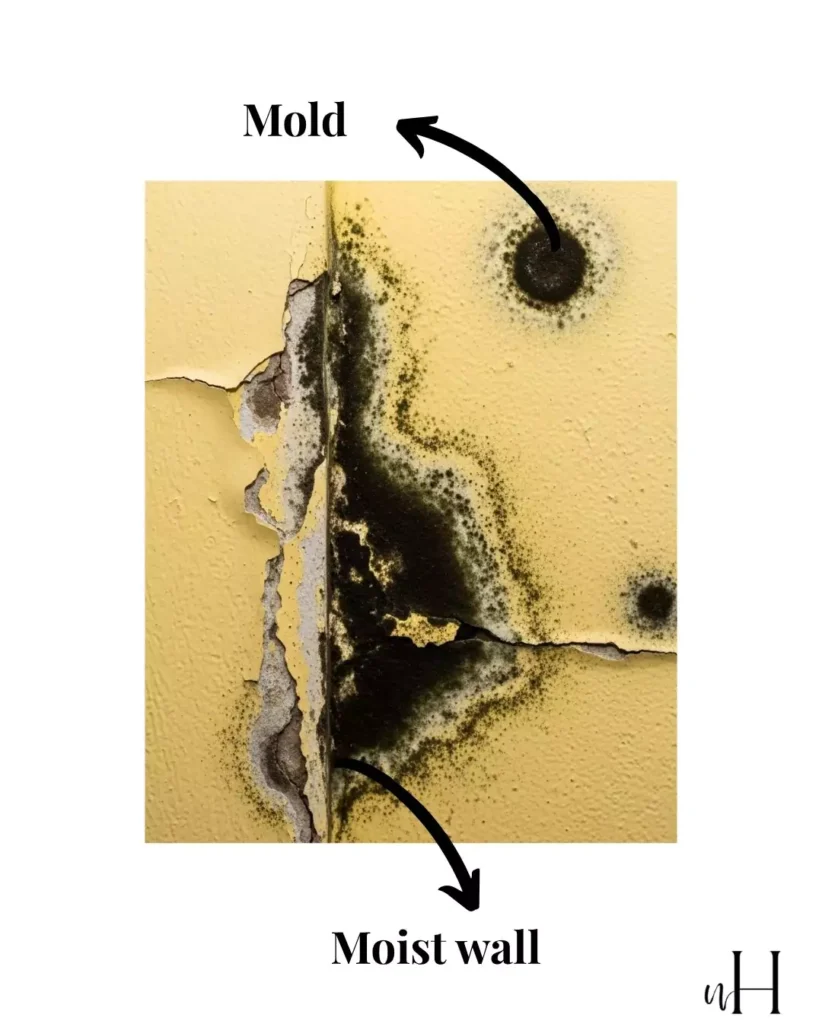
Paint Finish Matters
Interior paints go from flat matte to semi-gloss satin along with eggshell. Cleaning is the hardest for the reason that those flat paints do have a finish that is porous and non-reflective.
Satin finishes plus eggshell sheen shed some water and wiping them clean is easy enough. Satin sees common use within baths and also kitchens since it can resist moisture. Semi-gloss proves very durable being easiest to clean so it is great for trim doors and wet areas.
In summary, higher-sheen paints allow scrubbing as well as resist staining (use satin or semi-gloss in damp rooms), but flat finishes may need repainting after mold removal.
Cleaning Solutions (Natural & Chemical)
Use appropriate cleaners on moldy paint. A mild detergent and water scrub is the first step for most paint finishes. For disinfection, common options include:
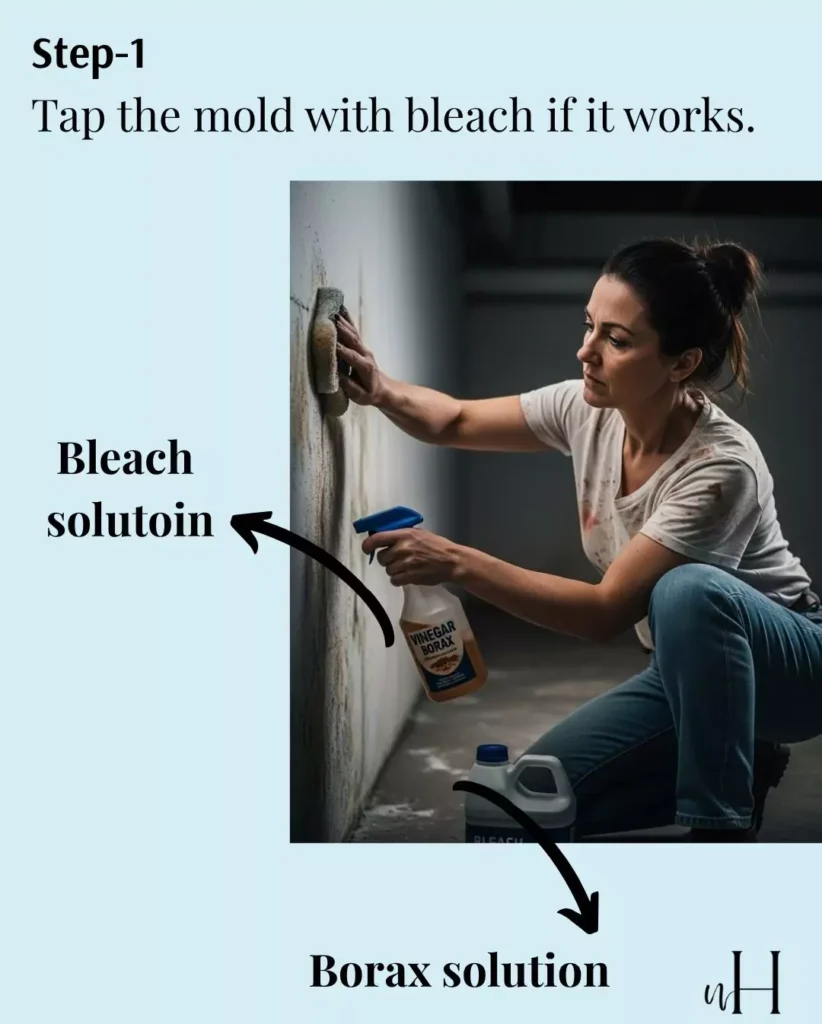
White distilled vinegar (5% acetic acid)
A natural, nontoxic antifungal. ~82% of mold species can be killed by full-strength vinegar and it penetrates porous materials. Let it sit 1 hour, then scrub after spraying on moldy areas.
Do not use on stone (marble, limestone), hardwood floors, or metal, as vinegar can etch these,but also at the same time it safe for many surfaces.
Hydrogen peroxide (3% solution)
An oxidizer that kills mold on contact. Apply undiluted, wait 10–15 minutes (it will bubble), then scrub and wipe clean. It’s safe for painted walls but may lighten some finishes.
Baking soda
By raising the pH a gentle alkali (sodium bicarbonate) kills mold. Mix equal parts baking soda plus water to scrub, or spray a baking soda solution (1 Tbsp in 1 cup water) on mold and wipe after drying. It’s safe, deodorizes, and leaves a residue that discourages regrowth.
Borax (sodium borate)
A stronger natural mold inhibitor (pH ~10) that kills and prevents mold. Dissolve 1 cup borax in 1 gallon of water, spray on mold, scrub, and (optionally) leave the residue to inhibit return. Non-toxic but mildly corrosive to metals.
Household bleach (sodium hypochlorite)
A powerful chemical disinfectant. Bleach cannot penetrate into porous paint or drywall but kills mold on nonporous surfaces (tile, laminate). Use a well-ventilated area and dilute it (no more than 1 cup bleach per gallon of water).
Apply to painted walls (test first in an inconspicuous spot) and scrub. Bleach fumes are hazardous; always wear gloves, eye protection, and never mix bleach with ammonia or vinegar (to avoid toxic gases).
Ammonia
An effective mold killer for nonporous hard surfaces. Mix clear ammonia 1:1 with water, spray, wait a few hours, then wipe. Extreme caution: ammonia fumes are toxic and it must never be mixed with bleach.
Commercial mold removers (e.g. Lysol Mold Remover, Clorox Mold & Mildew)
Often contain bleach or quaternary ammonium compounds. These are formulated to kill and remove mold on hard surfaces. Follow the label instructions and safety warnings. They can be effective for stubborn stains but are costly and still require precautions (gloves, ventilation).
According to CDC, cleaning moldy painted surfaces with soap/detergent (as above) is often sufficient before disinfection. After any cleaner, rinse the wall and dry thoroughly to prevent re-growth.
RELATED BLOG
- How to Get Rid of Mold in Shower in 5 Minutes
- How to Get Rid of Mildew Smell in Clothes-7 Fastest Solutions by Experts
Safety Precautions
Removing mold can release spores. Always protect yourself:
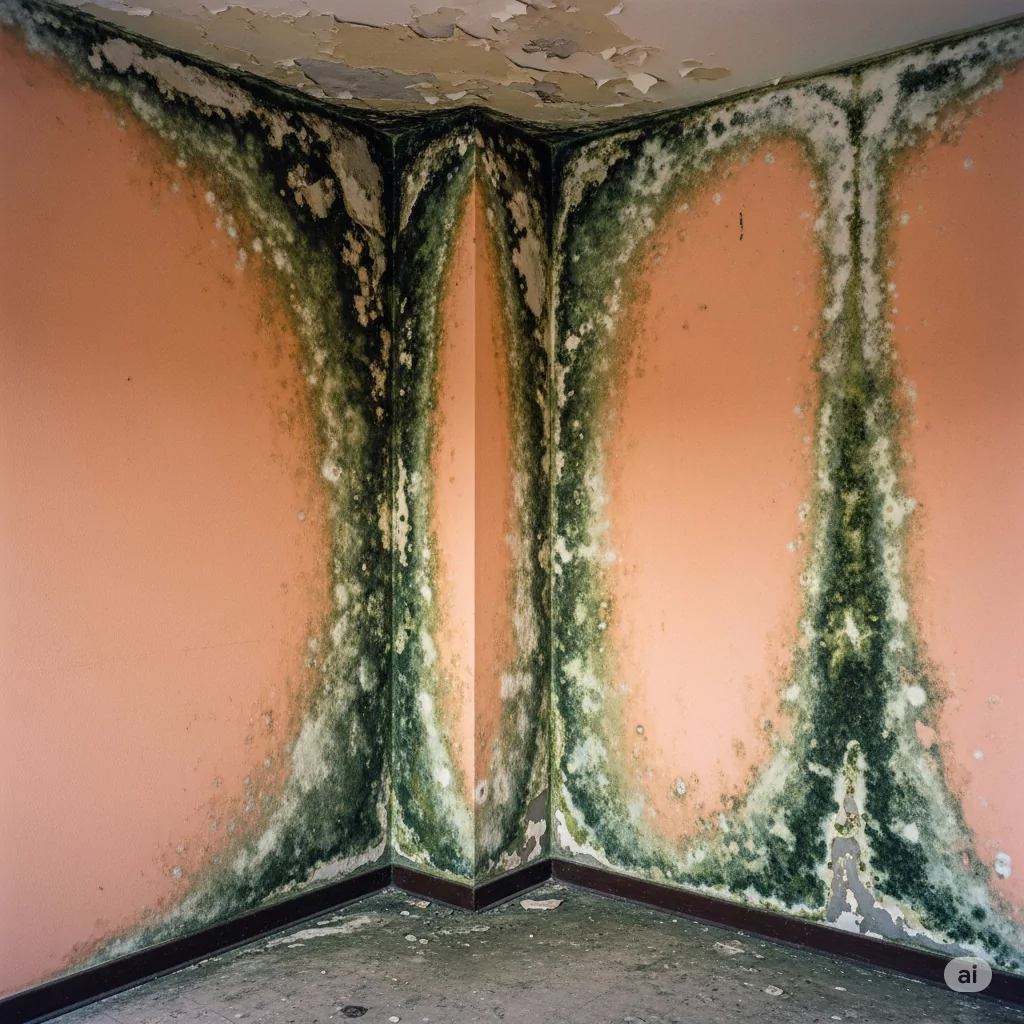
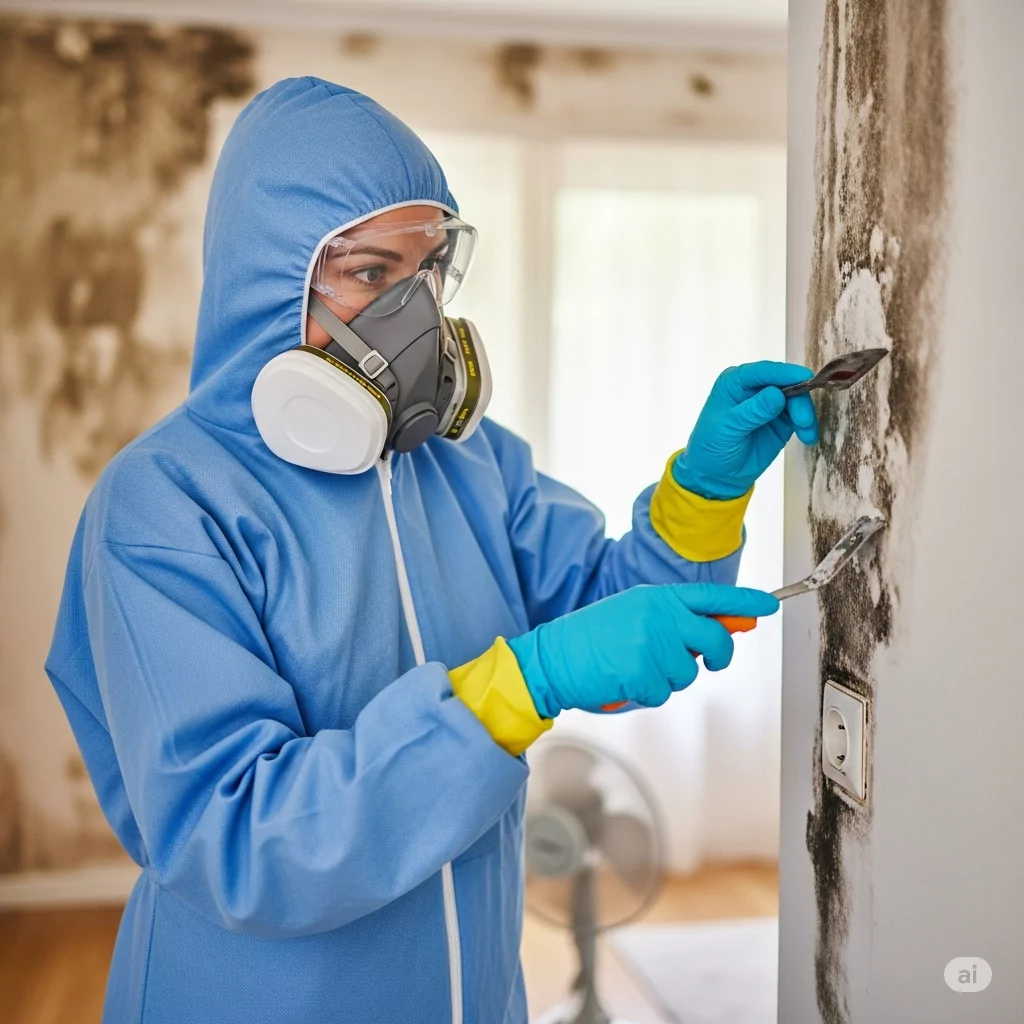
- Personal protective equipment (PPE): Wear an N95 respirator (or better) to avoid inhaling spores. Use rubber gloves and eye protection (goggles). Wear long sleeves/pants that can be washed after.
- Ventilation: Its imp to open windows and doors, and use fans to exhaust air outside while cleaning. This helps disperse fumes and spores. Close off the work area with plastic sheeting or tape if the infestation is large.
- Avoid spreading mold: Remove moldy debris carefully (double-bag and seal) and dispose per local guidelines. Don’t carry moldy items through the house. If mold gets on cleaning rags, launder them immediately or discard.
- Chemical safety: Never mix cleaning agents (especially bleach with ammonia or acids) because toxic gases can form. Use bleach only as directed. Work in small sections and keep children/pets away.
- Post-cleanup: Wash hands, tools, and clothing thoroughly. Ensure the cleaned area is completely dry (fans/dehumidifiers) to prevent mold returning.
Step-by-Step Mold Removal from Painted walls
1. Prepare the area and yourself: At first you should fix the moisture source. Lay down plastic sheeting to protect floors. Wear PPE (see above). Ensure fans/exhaust are running.
2. Test and remove damage: Before starting, confirm mold by dabbing a small amount of bleach or vinegar on a spot – mold will often lighten when killed. Scrape off any peeling or loose paint/debris. If mold is extensive, cut out contaminated drywall: if drywall is soft, crumbly, or mold covers >10 sq ft, it likely needs replacement.
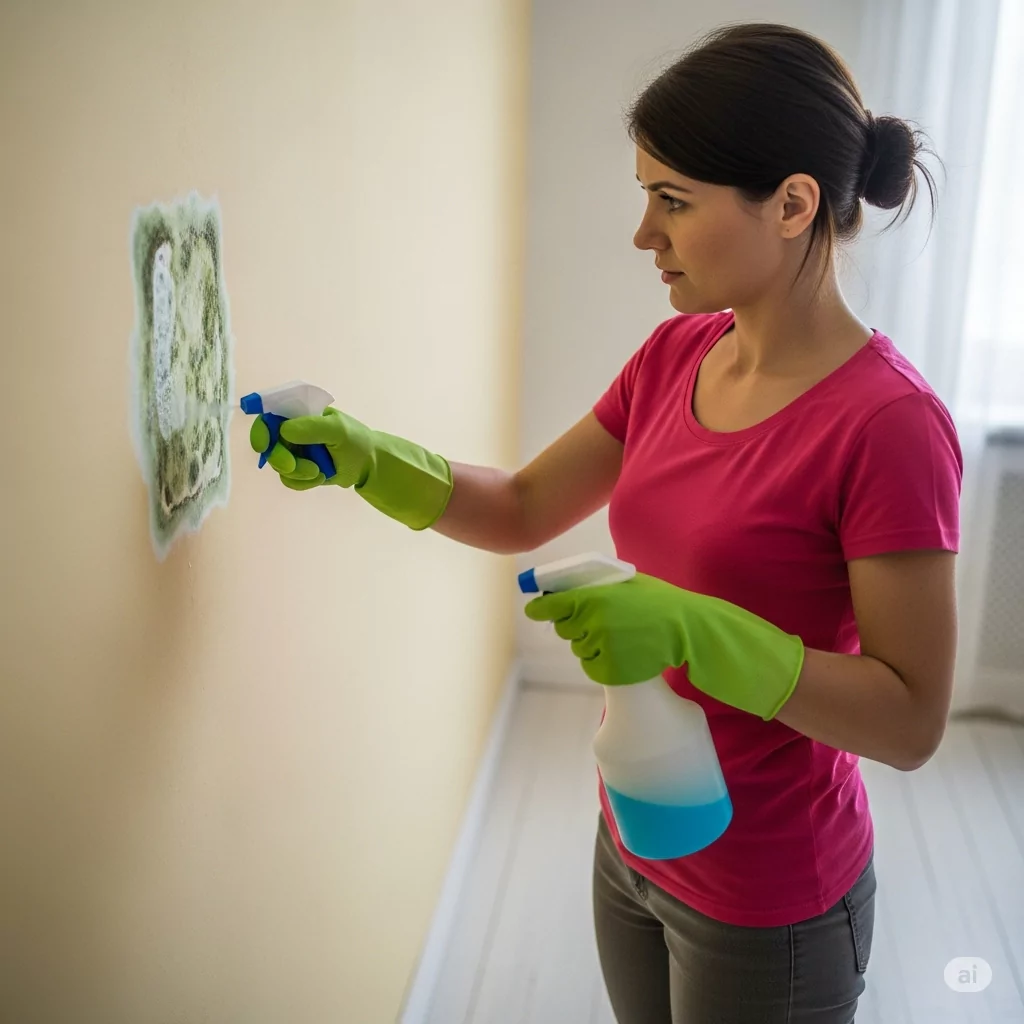
3. Initial cleaning: Mix warm water with a mild detergent or soap. Scrub the affected wall with a sponge or stiff brush to remove as much mold and stains as possible. Rinse with clean water.
4. Apply a mold-killing solution: Choose one based on safety and surface:
- Bleach solution: (1 part bleach to 3–10 parts water). Spray or sponge onto the moldy area, scrub with a brush, and let it sit ~10 minutes. Then rinse well.
- Vinegar or H₂O₂: Spray undiluted on mold, wait 10–60 minutes, scrub, and wipe clean.
- Borax mix: (1 cup borax in 1 gallon water). Apply, scrub, and optionally leave the residue.
- For a natural alternative, use a 1:1 vinegar-borax solution or add a bit of vinegar to the bleach solution (separately, not mixed).
5. Rinse and dry: After scrubbing, rinse the area thoroughly with water and dry it immediately. Use fans or a dehumidifier to speed drying. Mold cannot grow without moisture, so the wall must be bone dry.
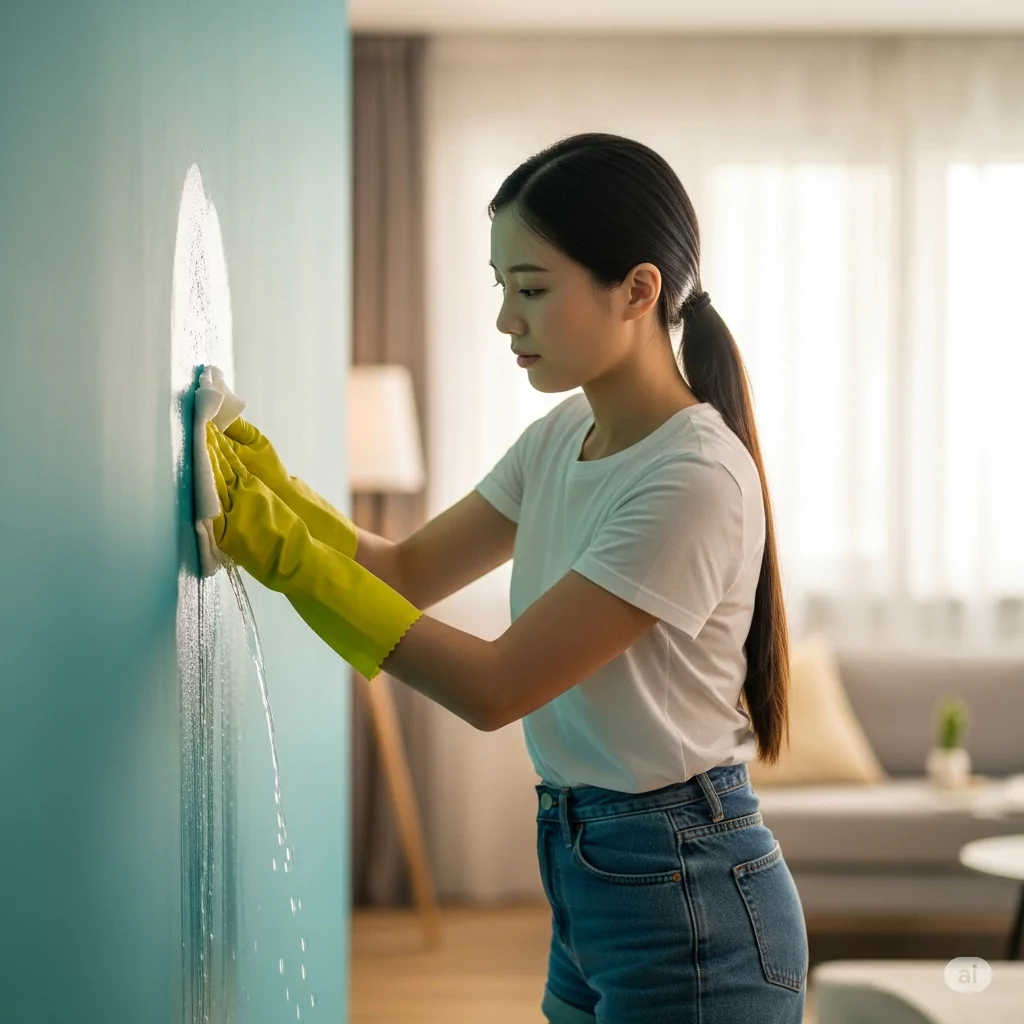
6. Repair surface: Once dry, keep checking out the wall. Sand or scrape off any remaining stains. Patch any holes or gouges in drywall. Sand smooth.
7. Prime and paint: Apply a high-quality, mold/mildew-resistant primer (preferably with mildewcide) to the cleaned area. For example, a latex stain-blocking primer creates a seal over porous surfaces. Then repaint with mold-resistant paint if possible. This adds a protective layer.
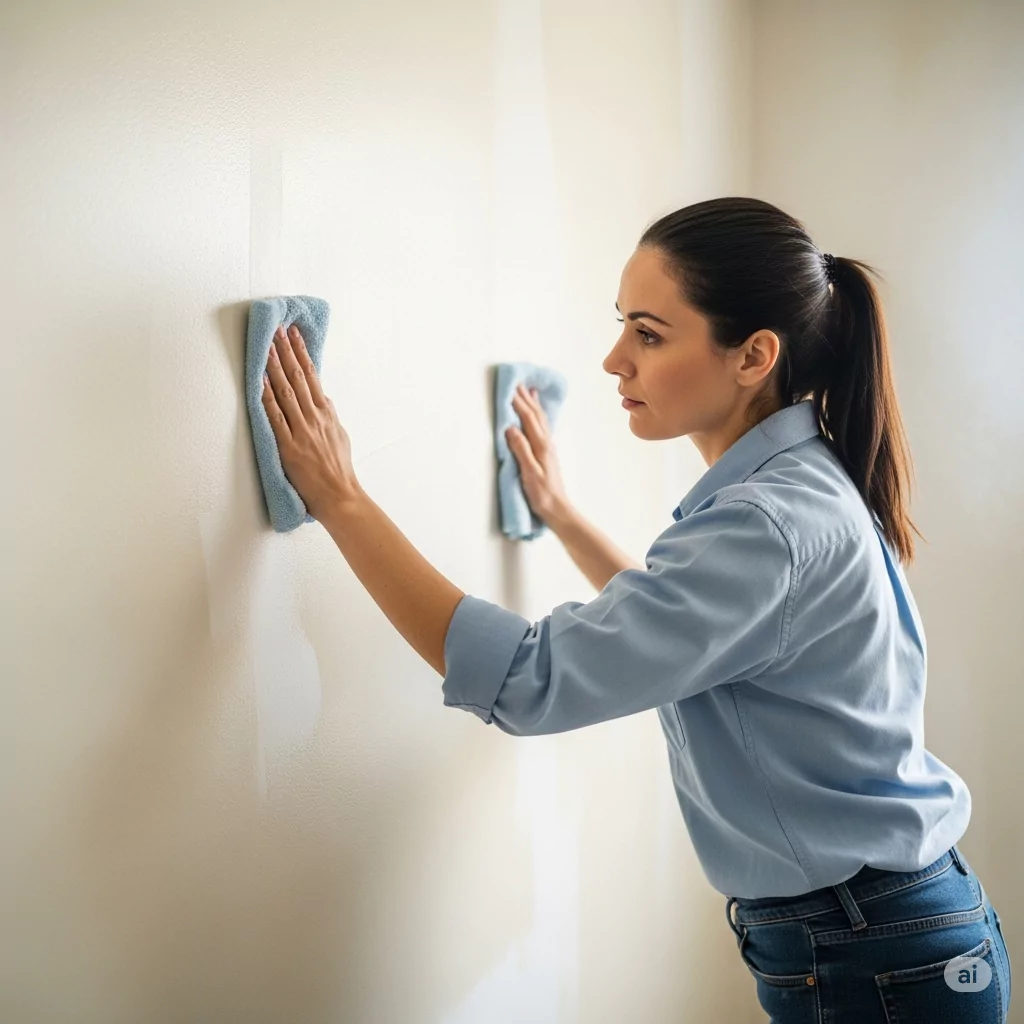
Handling Different Substrates
- Drywall: Follow the steps above. Surface mold on intact drywall can be cleaned; but if drywall is swollen, soft, or mold >10 sq ft, cut out and replace the damaged section. Treat the framing behind with a mold killer or let it dry fully before installing new drywall.
- Plaster walls: Plaster is porous. Small mold patches can be scrubbed gently (avoid sanding until dried). Use the same cleaning solutions, but test first to ensure the finish isn’t damaged. Extensive mold may mean plaster must be repaired or replaced. Always apply a mold-resistant primer after cleaning.
- Concrete/Brick: Non-porous masonry can tolerate stronger cleaners. Use bleach or commercial mold remover, scrub with a stiff brush, then rinse well. Ensure thorough drying.
- Wood or Paneling: Mold on painted or sealed wood can be wiped with vinegar or diluted bleach (test first to avoid wood bleaching). Unsealed wood that is moldy may need light sanding after drying, then sealing with paint or polyurethane.
- Other surfaces: If mold is on carpet, ceiling tiles, insulation, or acoustic panels, these usually require removal and replacement rather than cleaning (porous materials trap mold).
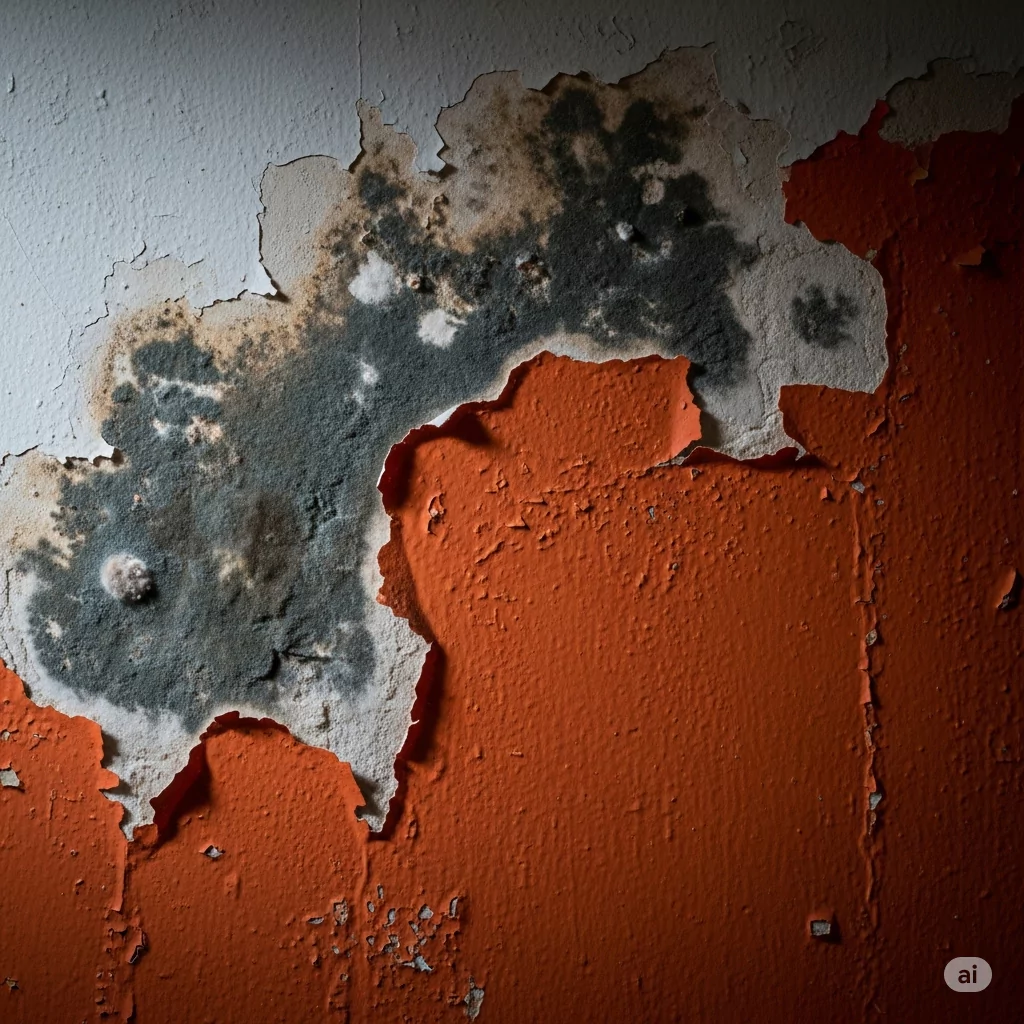
Prevention Tips
- Control moisture: Keep indoor humidity between 30–50%. In basements and bathrooms use air conditioners or dehumidifiers. Use bathroom/kitchen exhaust fans or open windows when showering/cooking to vent moisture.
- Fix leaks promptly: Repair plumbing leaks, roof leaks, and condensation problems. Make sure that gutters and downspouts direct water away from the foundation.
- Improve ventilation: Open windows and circulate fresh air in damp areas. In humid climates, whole-house ventilation system or dehumidifier in high-risk rooms is important to install.
- Mold-resistant products: After cleanup, use mold-resistant paints and primers. These products contain mildewcides that inhibit growth. Consider mold-resistant drywall or coatings in bathrooms, kitchens or basements.
- Regular inspection: Check moisture-prone areas (under sinks, behind appliances, attics) regularly for signs of mold or water damage. Clean and maintain HVAC drip pans and filters. Annual checks of your home’s envelope (roof, plumbing) can catch issues early.
When to Call a Professional
Small mold problems (under 10 sq ft, on accessible painted surfaces) can typically be handled as DIY. However, hire a mold remediation specialist if any of the following apply:
- Large area: Mold covers more than about 10 square feet (3 ft × 3 ft).
- Hidden mold: Musty odors or symptoms but no visible mold, suggesting mold inside walls or HVAC.
- Water damage: A history of flooding or major leaks (mold may be behind walls).
- Health concerns: Occupants have serious allergies, asthma, or weakened immune systems; or if “black mold” (Stachybotrys) is suspected.
- Recurrent mold: Mold reappears despite your cleanup efforts.
Comparison of Mold Removal Agents
| Product | Type | Effectiveness & Safety |
|---|---|---|
| White vinegar (5%) | Natural (acetic acid) | Kills ~82% of common molds on hard surfaces; penetrates porous materials. Safe/food-grade; gentle on paint, but may not kill all species. Avoid on marble, wood floors. |
| Hydrogen peroxide (3%) | Natural (oxidizer) | Kills mold by oxidizing spores on contact. Spray, wait 10–15 minutes, then scrub. Safe, leaves no toxic residue; may bleach fabrics or colored paint. |
| Baking soda | Natural (alkali) | Mild mold killer; scrub with baking soda paste or spray solution. Non-toxic, deodorizes, and deters regrowth. Best for light cleaning; requires scrubbing effort. |
| Borax | Natural (alkali) | Stronger mold killer (pH ~10); mix 1 cup/gal water, spray and scrub. Leaves a residue that inhibits return. Doesn’t emit fumes; handle gloves to avoid irritation. |
| Chlorine bleach | Chemical (hypochlorite) | Powerful disinfectant on non-porous surfaces. Use diluted (e.g. 1:10). Destroys surface mold but does not kill roots in drywall. Emits toxic fumes (wear PPE) and can discolor paint. |
| Ammonia | Chemical (ammonium hydroxide) | Kills mold on hard surfaces; similar potency to bleach. Toxic fumes; never mix with bleach (toxic gas). Useful for glass/tiles (well-ventilated). |
| Soap/detergent | Natural/Commercial | Detergent won’t kill mold, but it helps remove visible growth from painted walls. Always scrub with soap & water before disinfecting. Safe and cheap; follow with a biocide for residual mold. |
| Commercial mold cleaners (e.g. Lysol, Clorox) | Chemical (varies) | Formulated products (often bleach-based or with quats) designed to kill mold on contact. Easy to use (spray-on); follow label instructions. More expensive; still emit fumes and should be used with precautions. |
Each solution has trade-offs. Natural cleaners (vinegar, baking soda, peroxide) are safer but may require more effort. Bleach and chemicals act faster but pose health risks and may only clean the surface. Always ensure adequate ventilation, and consider what is compatible with your paint finish before choosing a cleaner.

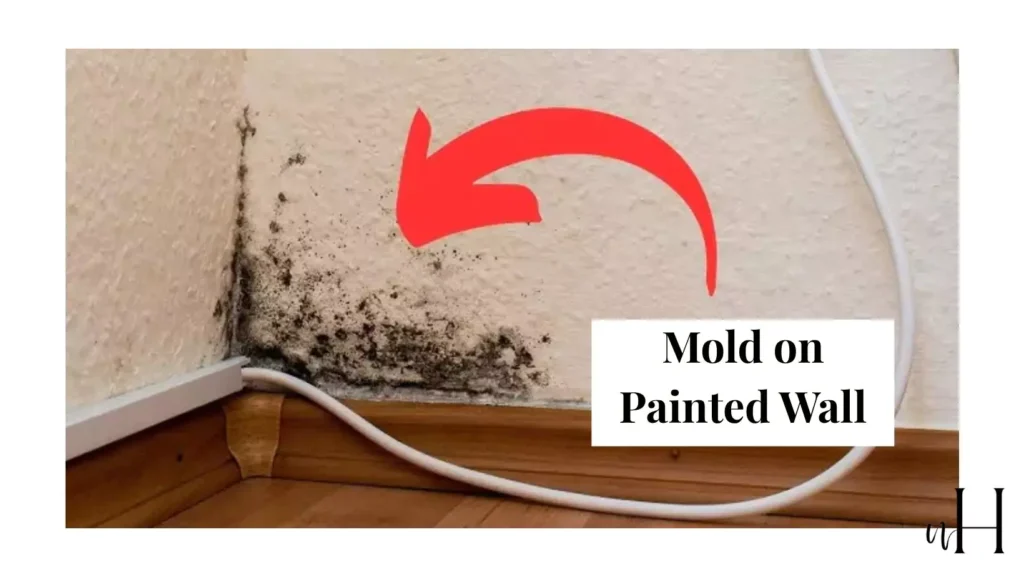
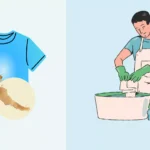
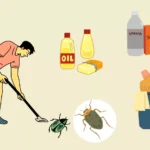
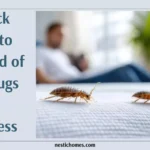


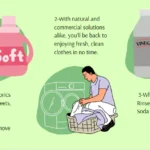
This is something more people should know about. I really enjoyed this article.
Your insights really stand out. This answered many of my questions. This was very informative and practical.